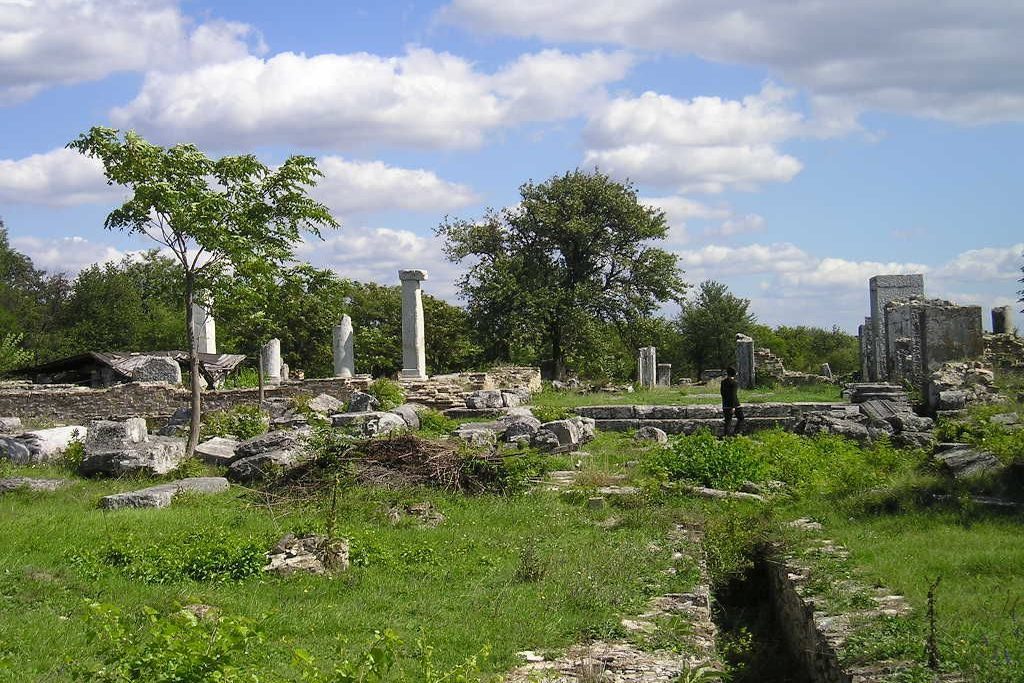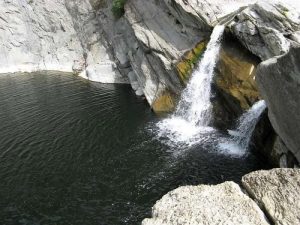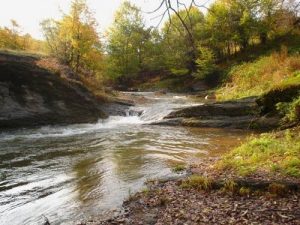

Nikopolis ad Istrum is an ancient Roman town, located 18 km north of Veliko Tarnovo on the road to Ruse and 3 km southeast of Nikyup. Its ruins are available for visits from early spring until late autumn.
The old deserted town is located on the left bank of the river Rosica, immediately after the bridge on the road of Veliko Tarnovo – Ruse. Nikopolis ad Istrum is by archaeologists from 1900. It was founded in 102 AD by Emperor Trajan in honor of the Roman victory over the Dacians. The city is located in the Danubian Plain.
Nikopolis ad Istrum was founded along the roads linking other towns in the province of Thrace and Asia Minor cities. The official language was Greek. The council head of government, was the Archons Board. The city had two major bodies – Municipal Council (so called Bule) he People’s Assembly (demos). A special college of priests had the task of maintaining the emperor worship powerfull and of la pagan deities: Zeus, Hera, Athina, Hercules, Asklepios, Mitra, Kibela and others. In Nikopolis ad Istrum also acted the geruzia.
The ethnic composition was full of color. There are many people with Latin names, but many of them are of Thracian origin. A significant number of people are of Greek origin. In the area were established Roman and Thracian veterans. The population of the Black Sea and the interior of the province of Thrace was divided.
From the inscriptions found in the city and its territory were identified various occupations of the inhabitants: bricklayers, carpenters, rolls, shoemakers, builders, a veterinarian, a person with powers of judgment, the court choir conductor, etc. To the north of the city wall and near the White Church -Pavlikeni and Butovo and Hotnitsa villages were discovered pottery production centers capable to satisfy the people’s needs and those for export. Near Hotnitsa also worked the quarry wherefrom valuable materials for construction were obtained. The city beats his own bronze coin, pe f he faces of coins being represented deities, public and religious buildings. For people entertainment, here took place fights between the gladiators and wild animals hunters.
Nikopolis ad Istrum was an episcopal seat. The city was planned in accordance with the so-called Hippodamian System (the streets were crossing in right angles and have basic directions). Today it can be seen what old streets looked like, Paved with huge blocks of stone, sidewalks, central sewerage with access openings at the base and other elements of ancient urban planning. Have been discovered the ruins of Odeon (small theater for chamber performances); The central square of the city (agora), with orbital colonnade remains; buildings around the market area; bouleuterion (ocal council); a street latrine (toilet); part of a large public bath (thermal bath), two of the gates of the fortification system and other parts of the architecture and urbanism of Nikopolis ad Istrum. 200 m west of the city are the ruins of a water collector tank.
Originally, the city had no defensive wall. They were built after the devastating attack carried out by Costoboci in 172. The city walls climbs to a height of 8 meters and the towers have reached up to 12 m. for each of the city walls was built a gate wll protected. The main gate of the city is located in the western part, irection of Rome and was called “Porta Romana”. The city gates lead to high streets paved with limestone slabs and limited by curbs. Under the sidewalk are constructed sewers for domestic water. Four streets form a neighborhood (island), typically the size of 30 x 70 meters. Nikopolis ad Istrum was well supplied with water. The main line is the western, 26 km lenght. Water came through it in a special tank built and located near the western wall. De From there, the urban water supply system was carrying the water into the public and private buildings, bathrooms and toilets. The additional water was brought by two smaller water pipes coming from the northwest and wells.
Nikopolis ad Istrum is dated back by archaeologists in the 1900. It was founded in 102 AD by the Emperor Trajan, in honor of the Roman victory over the Dacians. The city is located in the central Danubian Plain. D In terms of topography it consists of two parts. The north side is larger, reinforced and fortified, and the south-east is significantly lower. The total surface is of 21,55 hectares. Nikopolis ad Istrum and the surrounding area were the highest concentration of craft activities, agriculture and livestock, with many wealthy villages (vici), dachas (villas), cottages (Saltus) and markets (Emporia). The city was located on an important provincial road Odesa – Marcianopolis – to Meltaand probably Montana.
In December 2012 s it was has launched a major project to repair and upgrade the architectural reserve.




